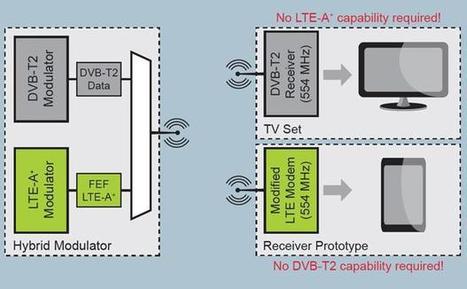A new hybrid mobile broadcast technology platform could provide a solution to the current standoff between the mobile and TV sectors over a common approach to mobile broadcast standards. The system, which embeds an LTE-A+ video steam within a standard DVB-T2 broadcast signal, is about to be field-trialled.
Research and publish the best content.
Get Started for FREE
Sign up with Facebook Sign up with X
I don't have a Facebook or a X account
Already have an account: Login
Monitoring innovations in post-production, head-end, streaming, OTT, second-screen, UHDTV, multiscreen strategies & tools
Curated by
Nicolas Weil
 Your new post is loading... Your new post is loading...
 Your new post is loading... Your new post is loading...
|
|













